3D printer: great potential for bulk printing
3D printers or 3D printers are devices for producing volumetric models. The devices of narrow specialization have unlimited possibilities and are now used in every area of modern human life. A few years ago, 3D printers became available for home use, incidentally covering part of a small business.
Content
Appearance history
The history of the creation of such a technique originated in the mid 80s of the last century, but the weak development of computer technology froze the active introduction of three-dimensional printing in everyday life and production.
A tangible start 3D printers have received only in 2005, along with the improvement of computer capabilities. Then the public was presented the first three-dimensional printer, which printed in color. Subsequently, the technology has undergone many changes, it has developed a modern software for managing the printing process. As a result, a functional unit became available to users, capable of “printing” phone cases or new 3D printers.
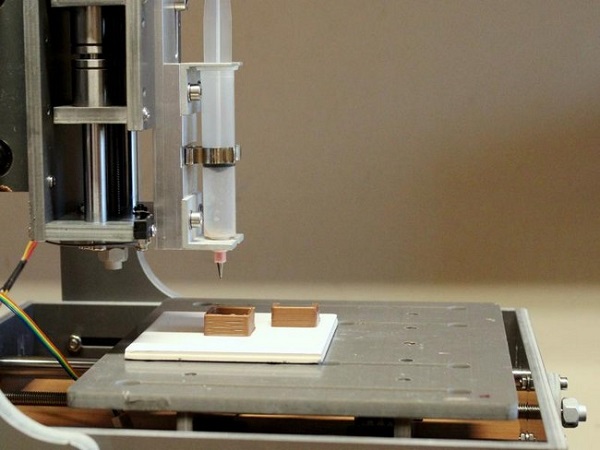
The first 3D printer
How it works
The general principle of operation of a three-dimensional printer in theory is simple and straightforward. In the program for 3D-modeling, an object or its part is created (large models are divided into several elements). Then the file is sent for processing by a specialized program (to form a G-code), after which the technician enters the file. The G-code divides the digital model into hundreds of horizontal tracks, specifying the trajectory of the print carriage. Molten material is applied to the base layer by layer, creating a completely tangible object.
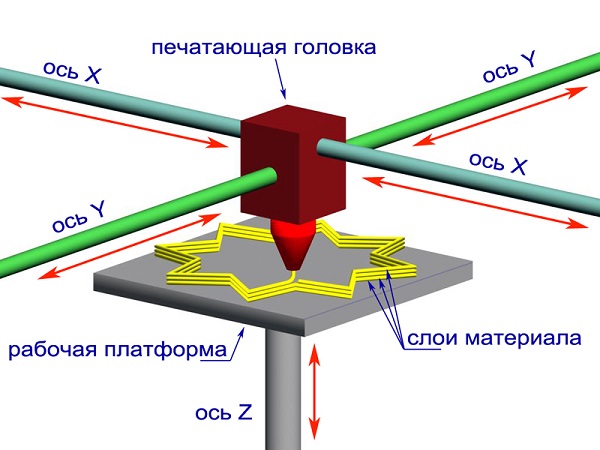
Schematic representation of a 3D printer
In total there are seven main technologies used for three-dimensional printing, but most of them have been used only for industrial purposes. Relatively compact and inexpensive devices have been developed for amateur plastic printing and small businesses.
- Technology Fused Deposition Modeling (otherwise FDM-printers) received the most massive distribution for three-dimensional modeling and cooking. The material is heated and fed to the platform through the nozzle of the print head. The object “grows” on the plane, and its size is limited by the parameters of the platform.
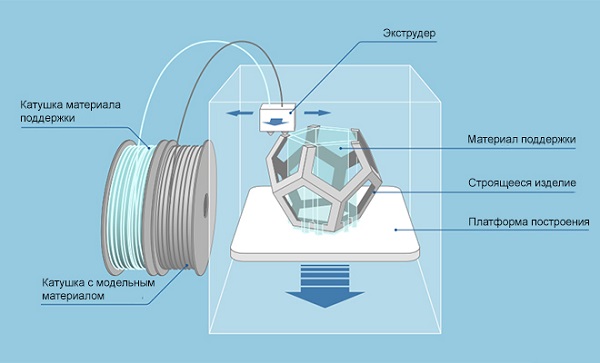
- Technology Polyjet Developed in 2000 and today owned by Stratasys. The creation of three-dimensional objects produced by polymerization of the photopolymer under the action of UV radiation. Photopolymer is an expensive and fragile plastic, therefore such printers are practically not used in everyday life, but thanks to precise granularity modeling devices are used in medicine and industry (to create prototypes).
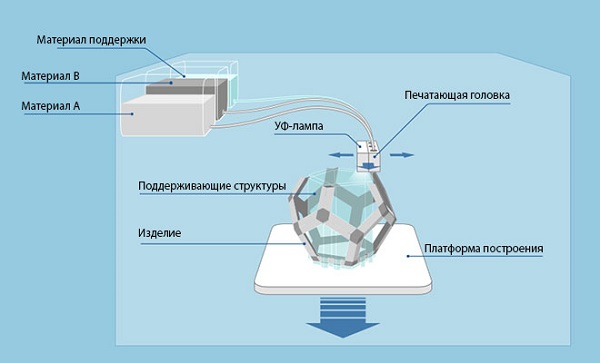
All about how modern printers for three-dimensional "plastic printing" can be learned from thematic video, for example, of this. They also often demonstrate how the device works with various materials for the manufacture of an object.
Management of the printing process
As a rule, the user needs to make a number of settings immediately before the start of printing.
- The equipment is connected to the PC via a USB cable.
- Calibration of the movement of the nozzle relative to the platform.
- Setting and control of the heating platform and the nozzle.
- Monitoring the ratio of temperatures.
- Management of the printing process (extruder) - setting the feed rate of the material, replacement of plastic spools.
Control over printing is carried out through a PC. To create an object from idea to result, the user needs special 3D modeling software and control apparatus.
Modern technologies do not yet allow creating a printer, where all operations are carried out by pressing a couple of keys, therefore it is necessary to master a lot of specific programs and the basics of modeling.
Before starting printing, the operator calibrates the printer, setting it relative to the table-platform. The basic firmware of the printer is a series of default settings, and the user makes more precise settings, depending on the material used. So, to create volumetric elements based on ABS or PLA, different melting points are set. In the process of printing, the operator through the software monitors the work. The whole process of creating a model can take from several hours to days, here the key factor is the accuracy of execution: precise objects with detailed drawing are made longer than coarser ones.
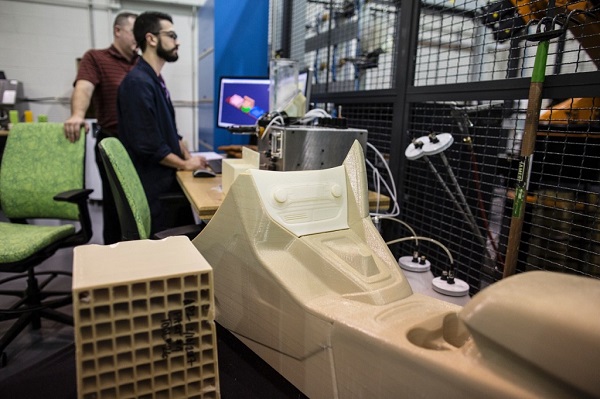
Where can I apply a 3D printer
The scope of 3D printers is quite wide: from amateur handicrafts to business. Entrepreneurs, along with students of architectural departments, were the first to notice the enormous potential of plastic printing.
- Design and creation of three-dimensional models of various structures.
- Production of plastic elements for equipment: covers, gears, handles. A separate direction was the manufacture of parts of foreign-made cars, which is quite natural if we estimate their cost.
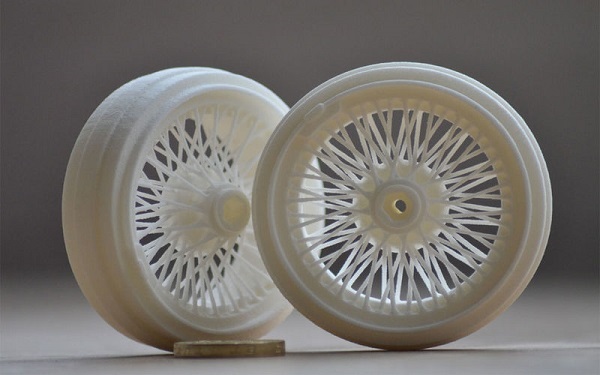
Wheels for cars
- Create unique exclusive souvenirs, accessories or copies of art objects. Gypsum Themis 30 cm from the store will cost more if you do not take into account the cost of buying the printer.
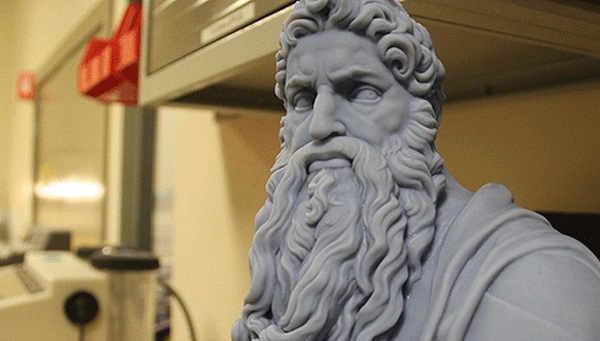
Copy of Michelangelo's sculpture
- Three-dimensional scanning and making bulk duplicates of any objects.
- The latest developments - here you can include the design of any new technology, equipment, furniture, and so on.
- Production of full-fledged installations for exhibitions or other events.
Also three-dimensional modeling is used in the jewelry industry and all areas of design and engineering.
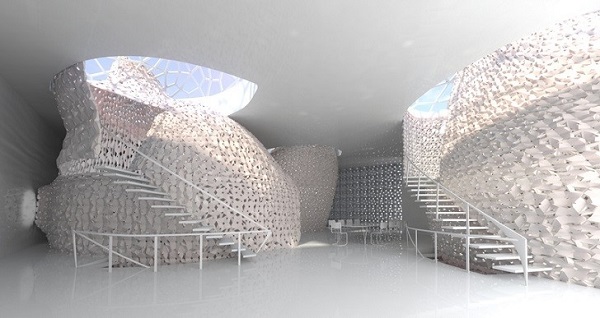
If previously printing was carried out with plastic, today the variety of materials is impressive. Manufacturers make various bases, for example, imitating natural wood. In addition, as the material for printing, you can choose not only polymers, but also nylon. This idea was very quickly picked up by designers and created whole clothing collections.
Gambling collectors will fully appreciate the potential of the "plastic print", because now you can recreate any object: models of airplanes, famous characters, objects of art. Rare collectibles can be quite expensive, as a very good home printer, and the choice is obvious.
To take or not to take: advantages and disadvantages of equipment
The use of bulk printing provides users with extensive features. The key advantage of technology is the reproduction of any three-dimensional object, and there are practically no exceptions. Anything that can be made of plastic can be “printed”, whether it is an expensive original bumper from a foreign car or a project of a future shopping center at an exhibition of architects.The decisive factor will be the size of the equipment, and more precisely, the size of its desktop.
The potential of "plastic printing" is complicated laborious preparation process and management requiring highly specialized knowledge. An inexperienced user will not always be able to design even a simple geometric figure in 3D-MAX, not to mention his own portrait. To use the technique, it must be mastered, and this will take some time.
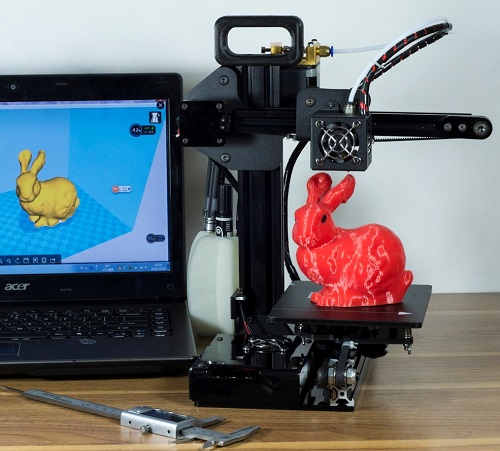
The second drawback of a 3D printer is its dimensions. Compact models are also available on the market, but their maximum print sizes are too modest, although they are quite suitable for the phased production of installations or architectural projects.
Of course, it is irrational to buy a 3D printer as a toy, the average cost of cheap segment models exceeds 30,000 rubles. A purchase will be beneficial if the equipment performs a specific task: to make a profit, to develop skills, to get an education, to be creative, to help in work.
In the near future we can expect new developments in this area. Today it is already possible to print a real residential building from ordinary building mix.Naturally, such equipment is not available for domestic use, but the very fact of using new materials for printing promises a methodical expansion of the possibilities of three-dimensional printing at home.

/rating_off.png)











